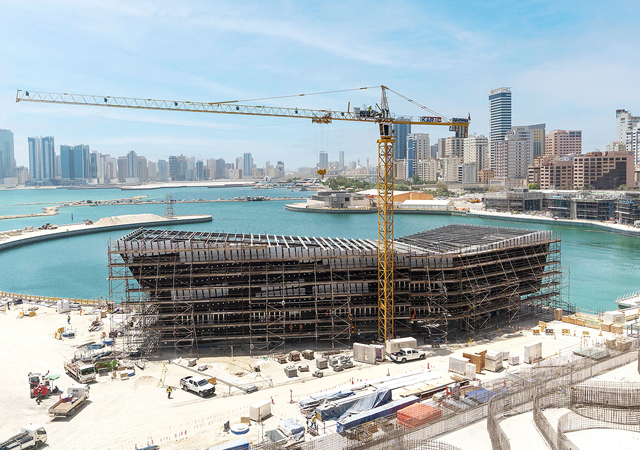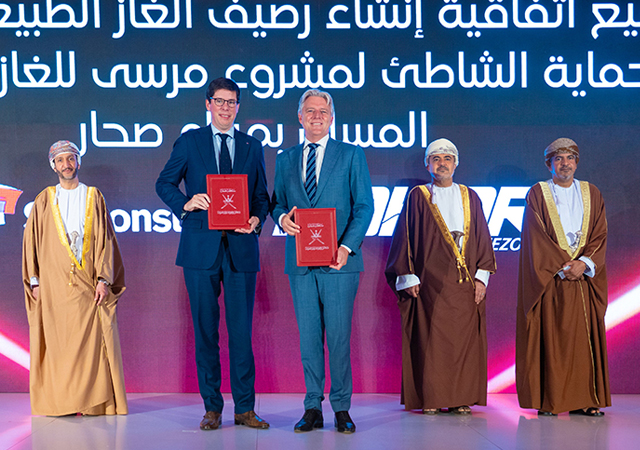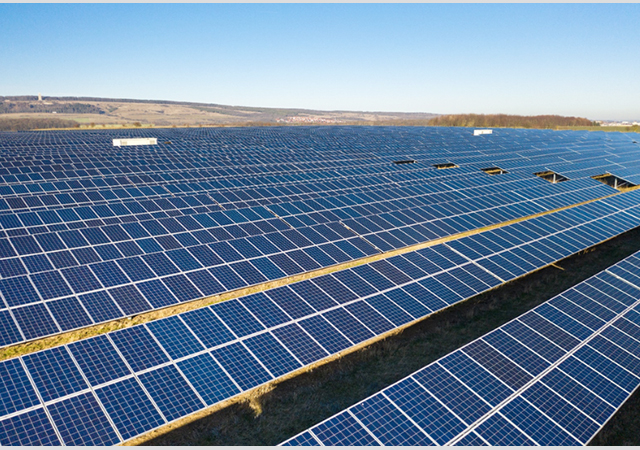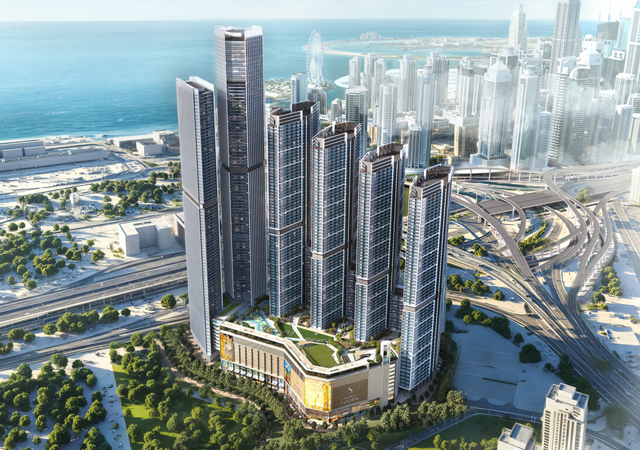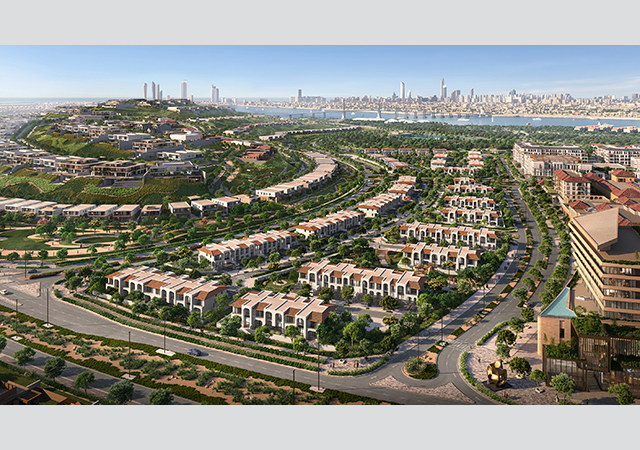

Automatic machines offer super-fast paving of concrete paving blocks with better quality and at a lower cost, says the Dubai-based Futuretech Engineering.
echanical paving machines, introduced in the 1970s, have developed considerably in recent years, most notably in performance and flexibility. They offer economies of cost, high quality, a consistent finish and super-fast installation. Also, they can be used not only for concrete paver blocks (CPBs), but also for slabs and precast concrete kerbs.
In comparison, manual laying of paving blocks is slow, and the result is often poor in quality.
All over the world, CPBs are on a trium
echanical paving machines, introduced in the 1970s, have developed considerably in recent years, most notably in performance and flexibility. They offer economies of cost, high quality, a consistent finish and super-fast installation. Also, they can be used not only for concrete paver blocks (CPBs), but also for slabs and precast concrete kerbs.
In comparison, manual laying of paving blocks is slow, and the result is often poor in quality.
All over the world, CPBs are on a triumphal march, as manufacturers highlight their aesthetic, physical and commercial advantages across an ever-increasing range of applications.
Weak link
But although CPBs meet the highest demands in efficiency and aesthetics, they are badly laid or frequently damaged during installation, due to improper manual laying techniques. This is the weakest 'link' in the CPB chain and is what needs to be rectified.
It is ironic that though paver manufacturers invest millions of dollars in ultra-modern plant, installation of their products continues to be by low-tech manual methods.
This means that the concrete block industry is dependent on a high-cost labour-intensive trade, and this is exactly why the Middle East's paver manufacturers should get involved, directly or indirectly, in this final 'link' in the chain, so that their market share does not suffer. This can be done in several ways:
• Delivery: Pavers can be supplied to the building site in such a way that mechanical laying is possible, in principle. Most major producers can do this with little or no extra investment.
• Variety of design: If a mechanical laying is presupposed as a matter of principle, a wide variety of designs must be available. Palletising robots such as OMAG, or even a conveyor belt system manned by low-cost labour can palletise even intricate patterns for laying by machine.
• Tailor-made units: The concrete block plant must supply tailor-made surfaces in laying units. Stones should be manufactured according to the laying pattern, colour mixture and mixture of the stone sizes in a forming station, to be divided into corresponding laying units and packed: in effect, a completely new service.
Picture this scenario: a concrete plant supplies block surfaces, divided into laying units, in necessary laying patterns and colour mix, including the edges. While this will increase the sq m cost price, it will reduce installation time. And as a result, the client will not have to pay a higher price per sq m of finished blocks. The producer will earn more money and the contractor will cut down on labour costs. Also, prefabricated block areas in the plant with laying units would become the standard, manned by fewer, better-trained workers.
The Middle East
Mechanical laying techniques in the Middle East are in their infancy but recent moves by a number of CPB manufacturers and contractors to commit to the purchase of mechanised laying machines is a major step forward.
The first paving machine was imported to the Middle East in 1987 and is still working today. Today, there are several of these machines in use throughout the Middle East.
There are critics of mechanical laying, but Optimas has facts which prove it is the best technique: In the Middle East, on average, it takes team of 80 labourers to lay between 600 to 900 sq m of pavers manually, yet, the work can be done with just one Optimas machine and 10 labourers including two operators, in the same time.
Indeed, mechanised laying has so much more to offer: it improves the working environment, offers improved quality, capacity and economies of scale.
Manual laying makes it difficult to maintain exact joint widths because no two workers will ever lay blocks the same way. Some lay them loose and others tight, leading to problems in symmetry. A laying machine exerts the same pressure on each block and maintains the same joint width, thus offering good symmetry, provided, of course, the pavers are of uniform size.
To get the best out of a laying machine it is recommended to have a team of three: one operating the machine, another directing the clamp, seeing that the pavement is in alignment with the strings and directions, and the third overseeing the supply of stacks for the paving front, removing the packing and clearing the empty pallets. It is also important that stacks are located at the right place and with correct distances between them. Care must also be taken when driving on pavements without sand in the joints.
Large projects must be carefully planned: bedding sand should be installed a few days before the pavers are laid, to ensure smooth progress of work, and that the sand remains level.
Machines offer economies of scale: laying by machine becomes more economical the larger the project, but areas less than 250 sq m may be cheaper to lay by hand, due to rig costs. However, the price per sq m is invariably lower. In the Middle East, a well-organised team can typically lay between 500 to 600 sq m per day, and over the course of a year, 30,000 sq m, to show a satisfactory profit.
Large projects
When choosing the appropriate material for a pavement, several factors have to be considered, including initial and life-cycle costs. Although concrete pavers may increase the initial cost of construction, their performance over the life-span of the pavement can result in significant savings over conventional pavement alternatives such as asphalt and poured concrete.
Roads in industrial areas and car-parks are ideal for CPBs, but larger areas, such as in ports, are also suited to paving.
A mega container handling facility at Grand Bahama Island in Freeport, US, which was built in 1998, boasts a 111,000 sq m area of concrete pavers.
The pavers were selected for their resistance to static indentations caused from metal corner castings on containers. Besides their resistance to highly concentrated loads, pavers are ideal for ports because they resist hydraulic oil that occasionally leaks from container handling equipment. Asphalt does not have this ability.
Moreover, port pavements often see differential settlement due to the varying nature of fill materials. Unlike poured concrete or asphalt, pavers offer a serviceable pavement without cracking. When settlement or rutting disrupts container handling operations, the pavers can be removed, repairs made to the base, and then put back in place.
The pavers were manufactured in a 90-degree herringbone pattern so that they could be placed by mechanical equipment in this laying pattern, over the mechanically-screeded sand.
New developments
Dedicated laying machines have developed considerably over the last two decades and they now make better quality pavements. Operations have been simplified, despite a proliferation of paver shapes and sizes, so much that they function almost automatically. Speeds have increased and weight lifting capacities more than doubled, and they are being used all over the world, even where labour costs are very low, as in Africa.
Production plants have also been boosting capacity, and coming out with larger pavers based on L, T or X profiles, specifically designed for machine laying.
Other factors are set to play a role in the increased use of pavers, such as larger building projects and the move towards BOT (build, operate, transfer) contracts and 'partnering' within the construction industry.
Such projects demand higher quality, reliability and more capacity (speed becoming the most critical component) often at lower prices, due to competitive tendering. The lowest bid may not always generate enough funds to support the use of excess labour. Thus, potential growth areas lie in commercial and industrial sectors covering such areas as ports, industrial hard standings, retail units, car-parks etc. and particularly low-speed roads and pavements where asphalt is currently extensively used. Whole life-costing reports will prove extremely beneficial in promoting the use of machine-laid concrete block paving in commercial and industrial areas where previously asphalt or reinforced concrete would have been laid.
The number of CPBs installed worldwide using dedicated machines will also grow due to many factors, among them being the necessity for better quality and more uniform finished pavements.
Carts
Even if pavers are laid by hand, a certain amount of technology is needed to make the process as efficient as possible, though some still believe that a wheelbarrow, a few string lines and a pair of strong hands is the most cost-effective way!
Here again, paver transport carts can be used to boost efficiency. These hydraulic bundle buggies can open from 50 cm to 145 cm. It is possible to angle the cart to 20-degrees off vertical to ensure pavers do not fall out when moving around the site. And when collecting pavers at the pallet, the cart can be adjusted up to 30 degrees (off horizontal) to automatically position the pavers. The cart can also transport other concrete precast elements such as kerbs, steps, palisades or retaining walls.
Hydraulic carts thus assist in mechanising the process of laying paver patterns as per colour and detailed designs when not offered by the paving factory, or where the access to a laying machine is limited due to space restrictions. A hydraulic cart replaces up to five manual carts and it can be attached to other machines.
Manual vs machine
The table (below) is based on reports from existing customers worldwide, gathered over the last six years. It is indicative in nature and compares average laying rates by hand and results achieved by the same labourers after training and proficiency in operating the laying machines. As noted, these averaged results depends on many factors.
An example of a real-life project from the Middle East, where expatriate labour costs are very low, illustrates the real costs of manual installation. The total area and labour cost/hour can be used to calculate the potential savings in labour costs for a project. Compare this saving then with the investment needed in equipment and machines to get an indication of the benefits of using technology.
Job size in total: 200,000 sq m. 35,000 sq m were installed by hand in 28 days at a rate of 12 sq m/man/day. The daily average was 1,200 sq m per day using 100 labourers. Labour costs were calculated at Dh60 ($15) per man day. Hence the average labour cost was $1.25 per sq m. Manual paver carts were used. Using machines on the same job will reduce labour cost to $0.30 per sq m.
Optimas' dedicated paver laying machines are purpose-built for paving. Their manufacturer Optimas Machinenfabrik K Kleinemas Gmbh of Germany has a representative office, Futuretech Engineering in Jebel Ali, headed by Oliver Grimm, who is ready to offer necessary support both at the concrete plant and on site. Also, all new customers receive operator training to ensure that maximum capacity and return on investment is assured at the very outset.










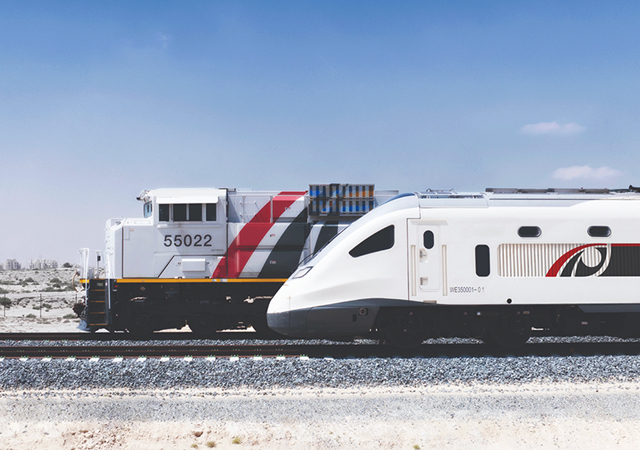
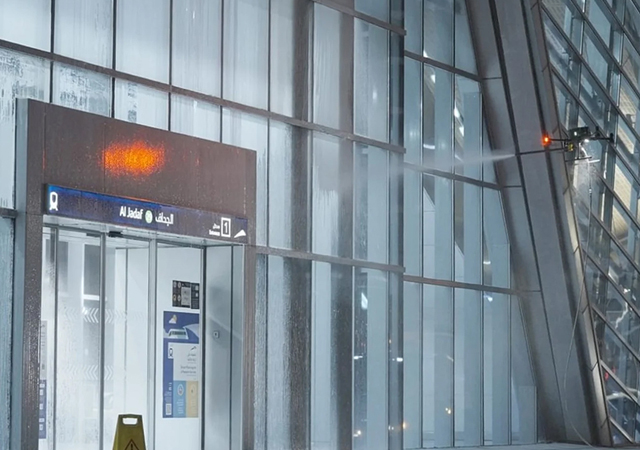
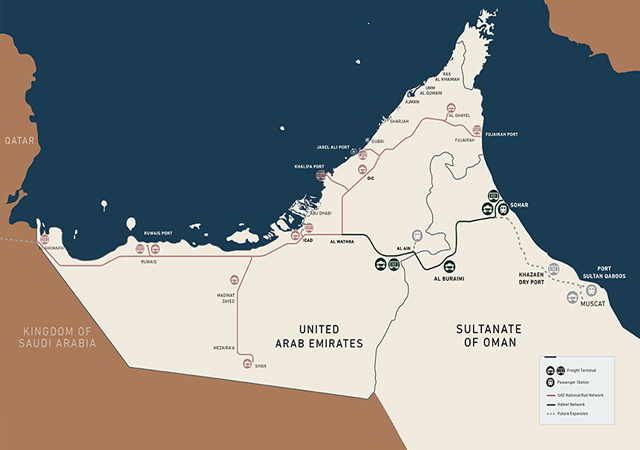
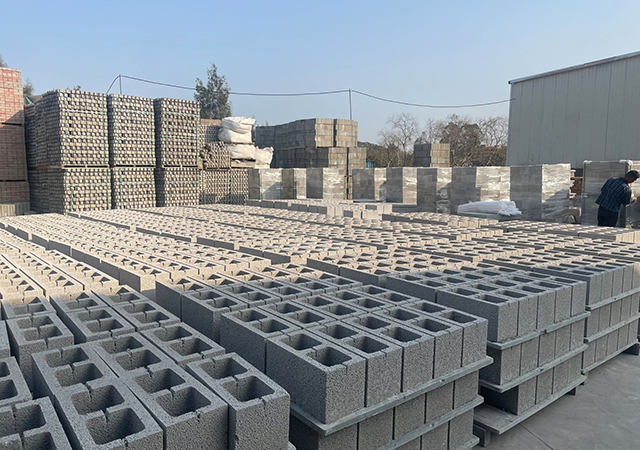


.jpg)
.jpg)
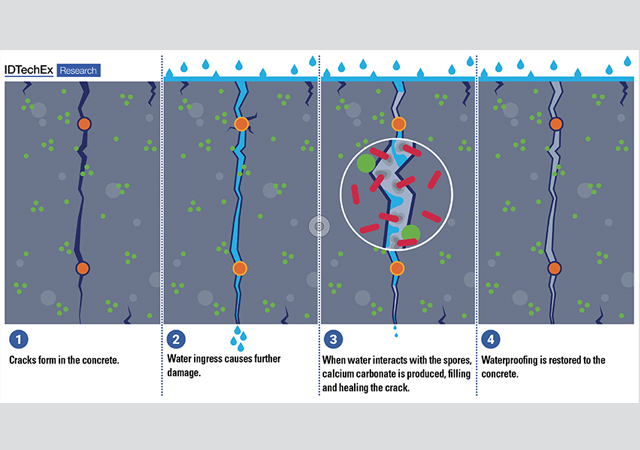
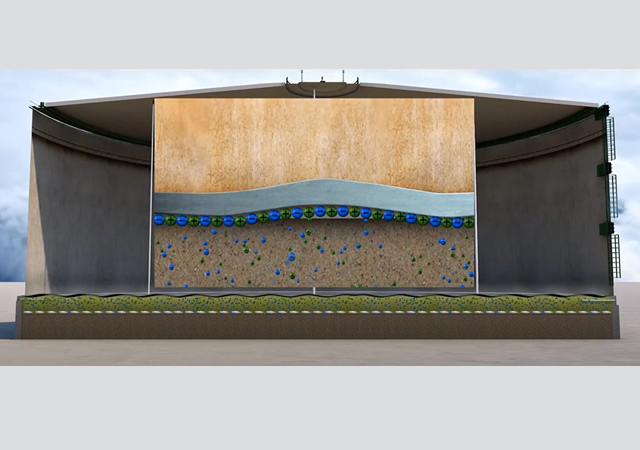
.jpg)
.jpg)
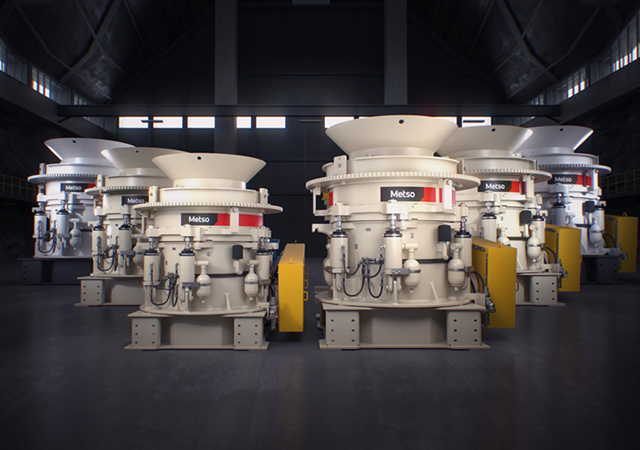
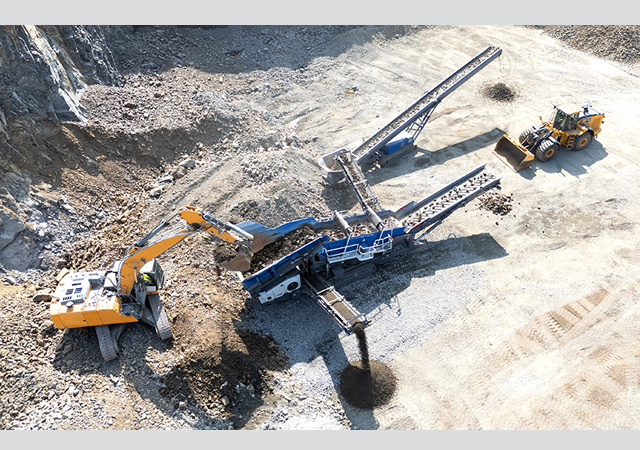
.jpg)
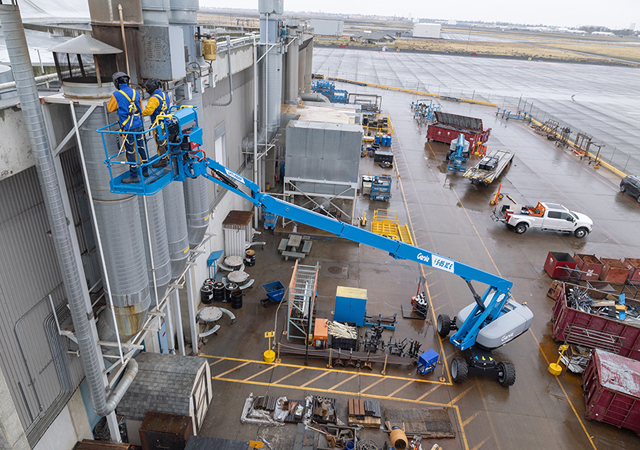

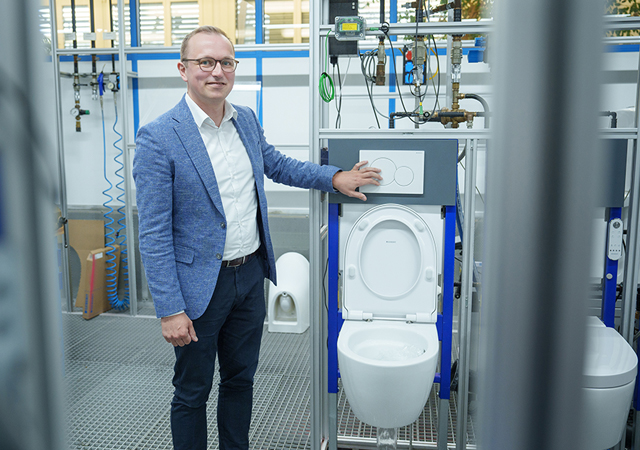

 Doka.jpg)



